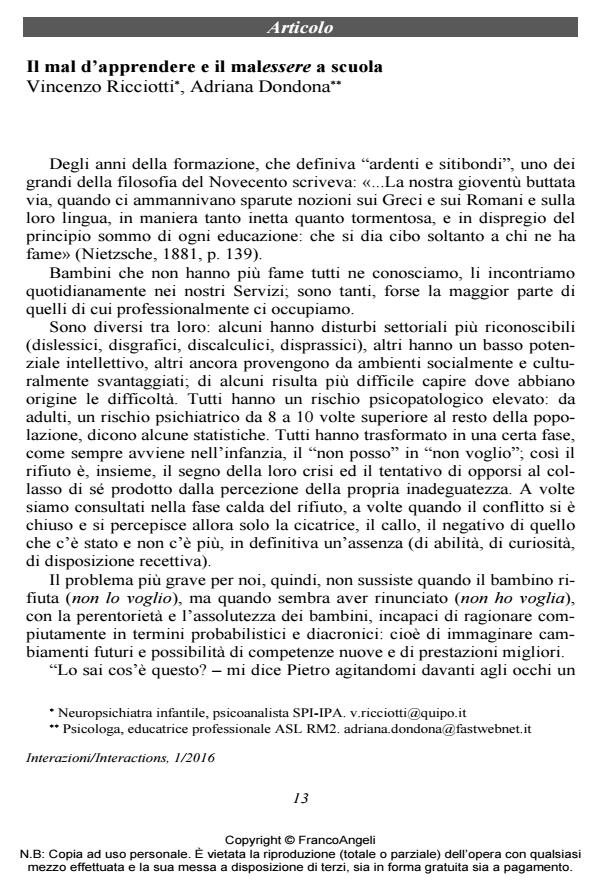Learning ache and feeling of malaise at school
Journal title INTERAZIONI
Author/s Vincenzo Ricciotti, Adriana Dondona
Publishing Year 2016 Issue 2016/1
Language Italian Pages 15 P. 13-27 File size 180 KB
DOI 10.3280/INT2016-001002
DOI is like a bar code for intellectual property: to have more infomation
click here
Below, you can see the article first page
If you want to buy this article in PDF format, you can do it, following the instructions to buy download credits

FrancoAngeli is member of Publishers International Linking Association, Inc (PILA), a not-for-profit association which run the CrossRef service enabling links to and from online scholarly content.
Facing the growing demand for studies and interventions with respect to children that show difficulties during their first contact with primary school, the authors deal with this kind of problem by following the evolutionary process of such a child, which hardly appears to be in a position to handle stress as well as the emotive ambivalence connected to the process of knowledge and therefore abreacts his\her excitement by acting out and is barely willing to accept external rules or to focus on long-lasting engagements. By considering clinical experiences, the article furthermore discusses possible ways of assisting the teacher to tackle the emotional dynamics in his/her group class, that are connected to share a mental common space in which both teacher and student elaborate on their conflicts. The article ends by analyzing new forms of uneasiness that arise when working with children nowadays and by outlining some reasons for these phenomena.
Keywords: Construction of the Self, learning difficulties, bodily excitement, group dynamics, narcissistic contract, negative capability.
Vincenzo Ricciotti, Adriana Dondona, Il mal d’apprendere e il malessere a scuola in "INTERAZIONI" 1/2016, pp 13-27, DOI: 10.3280/INT2016-001002